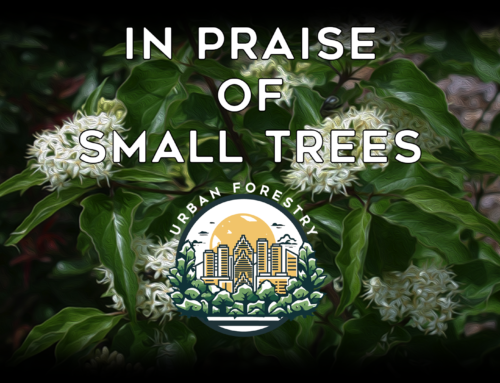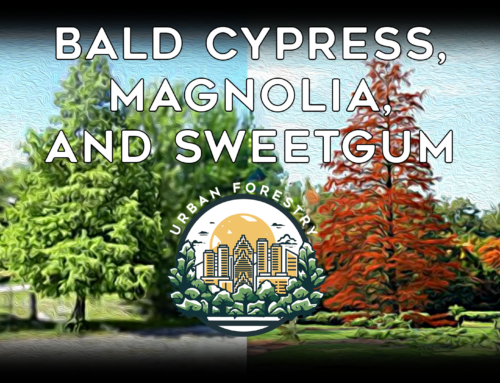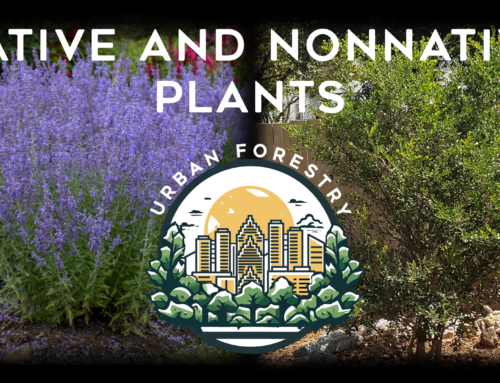This is the second in a series of very short articles pertaining to our Heights area trees and forest canopy. It is written simply and in lay terms and avoids Latin names and too much jargon. The author makes no claim to having great knowledge, just a lifetime of looking, growing, and studying trees.
Our property is a part of the greater ecosystem of Houston, Texas, the New World, the Earth. We as individuals might not have a direct effect in saving the whale or the Amazon, but we can and do affect our own small portion of this world and we can have an impact in our plant choices and decisions. We must make positive changes and doing good is quite doable. Everything we do on our property affects the rest of the planet. Be positive not negative!
Every mature tree we keep healthy and standing contributes greatly to the air quality, life of the wild creatures we rely upon, softens the rainfall, absorbs water, shades our lives and homes, and improves our moods. So, the first right decision is to save your existing trees and then look for ones to add to the landscape. A mature tree will pump carbon into the Earth through its roots helping to mitigate against climate change. The older trees support more wildlife and give back more to the local system than do the young newly planted trees.
Planting trees may seem a daunting decision, but keep in mind that following some guidelines (there are very few hard and fast rules) will ease your mind and start you on the path of improving our world one little lot at a time. I will discuss species and good choices in another article.
Planting time can be all year with container grown trees, but certain seasons are better. Fall is best due to more consistent moisture and mild temperatures giving the roots three seasons to establish before trouble arrives in summer. Winter is alright and is usually considered arbor season in Texas. Spring has good moisture and mild temperatures like fall, but less time before the beast arrives in late May. Summer is the worst time due to inconsistent rain and high temperatures sucking moisture from the ground. Nevertheless, you can plant in this time if you take great care in keeping the plant watered and nurtured. No matter when you choose to plant avoid fertilizer this first year as it can damage roots of tender young trees. Should you be planting a bare rooted tree (usually nuts and fruit trees) winter is the only good choice as the tree must be dormant. Remember all young trees require supplemental watering for at least two years.
How many or few trees to add is a decision based on aesthetics and the space around one’s home. I have seen massive oaks growing from the literal edge of old homes, but I think fifteen feet of open area for large trees and 6 feet for smaller will save issues later. Spacing between trees will depend on whether you seek a woodland look or individual specimens. Textbook spread and height given for a tree is based on trees with full spacing. It is not reached when crowded by a wooded situation. In a woodland garden one can practically plant two trees in one hole or space randomly to get the look you seek with a mix of species, ages, and textures. Both styles give benefits and are more a matter of personal taste. Just remember that the more crowded the smaller the individual canopy and slower the growth. Also avoid planting the giant trees under power lines as they will be in constant need of pruning.

A wooded garden in East Texas.
Planting, Mulching, and Trimming of trees

Spaced Oaks on North Boulevard in Houston.
Planting, Mulching, and Trimming of trees
Avoid fast growing weak wooded trees such as the Arizona Ash or Silver maple or nonnatives like the Camphor, Tallow, or French Mulberry as you will have a liability to deal with in a very short time. Stick to the trees one sees growing in our forests and parks such as southern pines, oaks, hollies, etc. They may live for centuries and support our local birds and bugs.
After planting it is wise to mulch the root zone of the young tree with shredded bark or pine needles. Do not mound this up the trunk as you will hasten attacks of fungi and insects into the new planting. Just because you see some trees treated this way does not make it right and, to borrow a phrase, Just Say No!
Another caveat with trees is to not lop off the limbs (usually referred to as pollarding). Some trees survive it, but usually it is known as Ten to the Ground. After the lopping of fine trees most will be dead in a decade. It is especially hard on pecans (the usual victim) and oaks and pines will suffer even sooner as they have no latent buds and grow from the tip of limbs. Do not remove more than a third of a tree’s top in any case as you will starve it of its food produced by the leaves causing stress which can kill it especially during hot and dry years. Always use a reputable, trained arborist not a landscaper or cheap tree service. Protect this investment: your home and the planet will give you thanks.

A lopped or pollarded tree
Planting, Mulching, and Trimming of trees
A lopped or pollarded tree resulting in dense thin limbs growing at the tip of structural limbs. It can cause the tree to behave like a sail in high winds increasing the risk of toppling.
In later articles I will go into detail about choosing species, trees to remove and to avoid, and even companion plantings that work in shade and part shade.



















